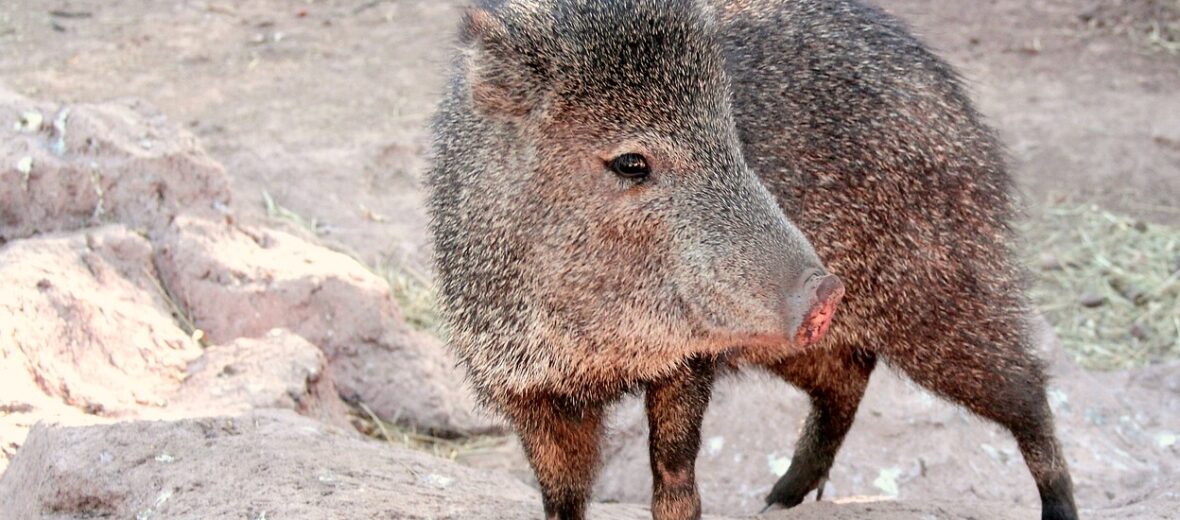
It’s not a pig, it’s a peccary… a collared peccary. These critters roam from Southwestern United States down to South America. They roam in packs called a herd and can be very formidable, if threatened. Can you say oh my gored? Another name given to these creatures is the javelina. Aptly named for their razor sharp tusks which are used, in part, for fighting. Due to their numbers and wide distribution, these critters are listed as Least Concern by the IUCN.
First the Stats…
Scientific name: Pecari tajacu
Weight: Up to 55 lbs
Length: Up to 4 feet
Height: Up to 20 inches, at the shoulders
Lifespan: Up to 24 years
Now on to the Facts!
1.) Collared peccaries have 2 sharp tusks that protrude from their jaws that have earned them the name javelina. Spanish for javelin.
2.) The collared peccary is crepuscular (awake during twilight hours). Collared peccaries sleep inside burrows, under the roots of trees, or in caves during the evening.
3.) Peccaries are omnivores (they eat both plant and animal matter). Although their primary diet is plant based: seeds, prickly pears, beans, berries, roots, and tubers. They will supplement their diet with insects, lizards, and carrion (dead animal matter).
4.) Collared peccaries are very territorial and viciously defend their group and young!
5.) The peccaries live in herds of up to 30 or more individuals. Typically in smaller groups of 6 – 12.
But wait, there’s more on the collared peccary!
6.) Both males and females have musk glands located right above their rump. They use these glands to mark their territory and each other. In a sense, they pee on each other. Hence another name for them – skunk pigs.
7.) Predators of the collared peccary are bobcats, jaguars, coyotes, pumas, and humans.
Did you know…?
Baby collared peccaries are known as “reds” because they are covered with red fur at birth.
8.) Females usually become mature around 8 – 14 months while the males are mature after 11 months.
9.) Mating season lasts year round. Pregnancy lasts 145 days and birth results in 1 – 4 babies.
10.) A collared peccary can become dangerous if approached when they have reds (babies) with them or if they have been getting fed by humans. They start to lose their fear of humans but still maintain their hesitation and will gore a victim if spooked.
Now a Short Collared Peccary Video!
Also, check out the Critter Science YouTube channel. Videos added frequently!
Want to suggest a critter for me to write about? Let me know here.



